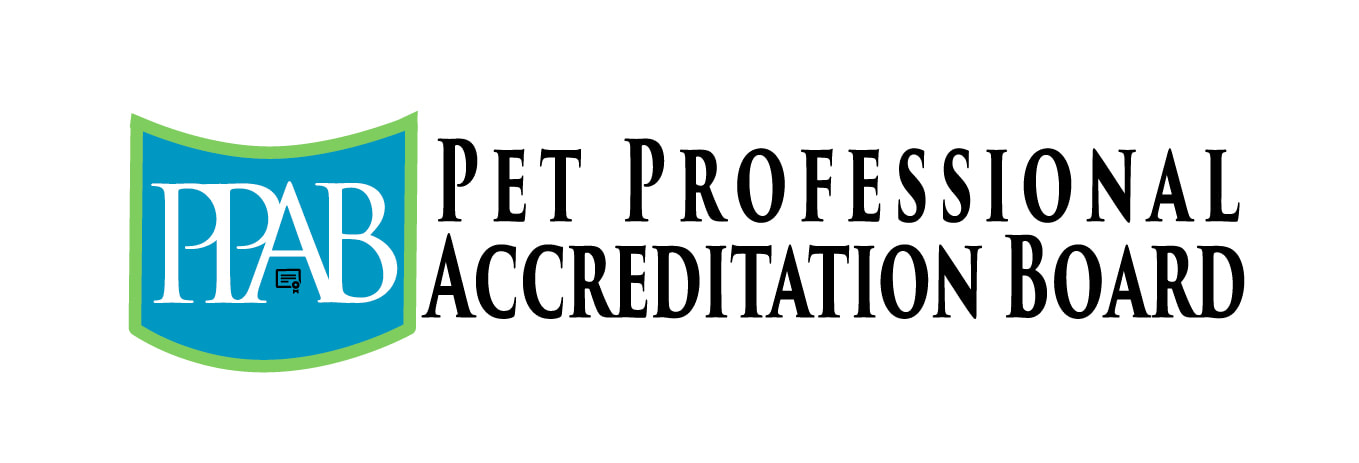|
For Dog Training Education Month, we’re breaking down how to choose a dog trainer by taking a look at dog training credentials and what each one means. In the United States, dog training is unregulated, meaning anyone can call themselves a dog trainer and there’s no standard for how they treat dogs or how educated they are on the science of learning. Dog training is both an art and a science, and unfortunately, not all trainers (or even dog training schools) use current science when training dogs. This means that you - a dog owner - have to do a little more research when choosing a dog trainer than many other service based professionals. Since training is unregulated, credentials and certifications are not required - and even good trainers might not have any! You can visit the American Veterinary Society of Animal Behavior's website for recommendations on choosing a trainer outside of looking at certifications. We will be covering varying schools, certifications, and membership organizations over the next few blog posts. Today’s topic is independent certification organizations. Independent certifications are important because they demonstrate a trainer’s commitment to continuing education. Since dog training involves behavioral science, it’s important to keep up with new findings and studies and ensure your training continually evolves to be the best it can be. It also lets you know that an outside organization has certified your trainer, rather than just their school. Let's take a look at some examples!  Certification Council for Professional Dog Trainers The CCPDT gives several certifications, including:
The CCPDT is an independent organization, not affiliated with any dog training school, which makes its certifications available for everyone. Trainers and behavior consultants must have hundreds of hours of hands on experience and pass a comprehensive exam demonstrating their understanding of the science of behavior and training. Certificants must also follow a “Least Intrusive, Minimally Aversive” training mindset, striving to use training and behavior modification techniques that are the kindest and safest for the dog. Members are required to meet continuing education requirements as well. The CCPDT and all of their levels of certification are a great place to look for trainers! International Association of Animal Behavior Consultants The IAABC focuses and behavior problems that may arise in a wide variety of animals - not just dogs! Their members can become Certified or Associate Certified, depending on levels of education, experience, and species (full list here). Certification through the IAABC is a rigorous process, requiring case studies and letters of recommendation, demonstrating excellent knowledge in how to change behavior. IAABC consultants also follow “Least Intrusive, Minimally Aversive” training techniques and it is another wonderful organization to use to look for a person to help modify behavior problems. Like CCPDT, the IAABC is independent and not affiliated with a specific dog training school, so all trainers and behavior consultants can work towards being a member.  Fear Free Animal Trainer Certification The Fear Free program is slightly different than the others on this list, but I’m including it here because I think it fits best. This program does do education on the Fear Free movement and handling, which makes it unlike the others just evaluating your current training methods and standards. However, a certification from an organization such as IAABC or CCPDT is required prior to being eligible for the Fear Free program. Graduates of the program (passing each module with at least 80% in addition to the previously mentioned requirements) earn their Fear Free Animal Trainer Certification. This program is available in varying forms for many pet professionals, from all members of a vet clinic to shelters to groomers! Pet Professional Accreditation Board The PPAB offers several levels of certification, including:
The International Association of Canine Professionals The IACP offers CDT (Certified Dog Trainer), CDTA (Certified Dog Trainer Advanced), and PDTI (Professional Dog Training Instructor Certification). This organization has not chosen to follow the path of other independent organizations such as CCPDT and IAABC in their training methods, and allow their members to use correctional tools such as prong collars, shock collars, and choke collars. While not all IACP members may choose to use these methods, if your trainer is IACP certified you should investigate closer to see if they will be using positive reinforcement training methods aligned with current scientific standards or not. Stay turned for upcoming posts on membership organizations and dog training schools to guide your decision on choosing a trainer!
0 Comments
Your comment will be posted after it is approved.
Leave a Reply. |
MESSY Dog Blog
What do you want your dog to do? We can help you train it! Categories
All
Archives
May 2020
|
Helping dogs and their owners achieve their goals since 2016
Currently serving owners in the Cedar Falls, IA area and online.
Currently serving owners in the Cedar Falls, IA area and online.



 RSS Feed
RSS Feed
